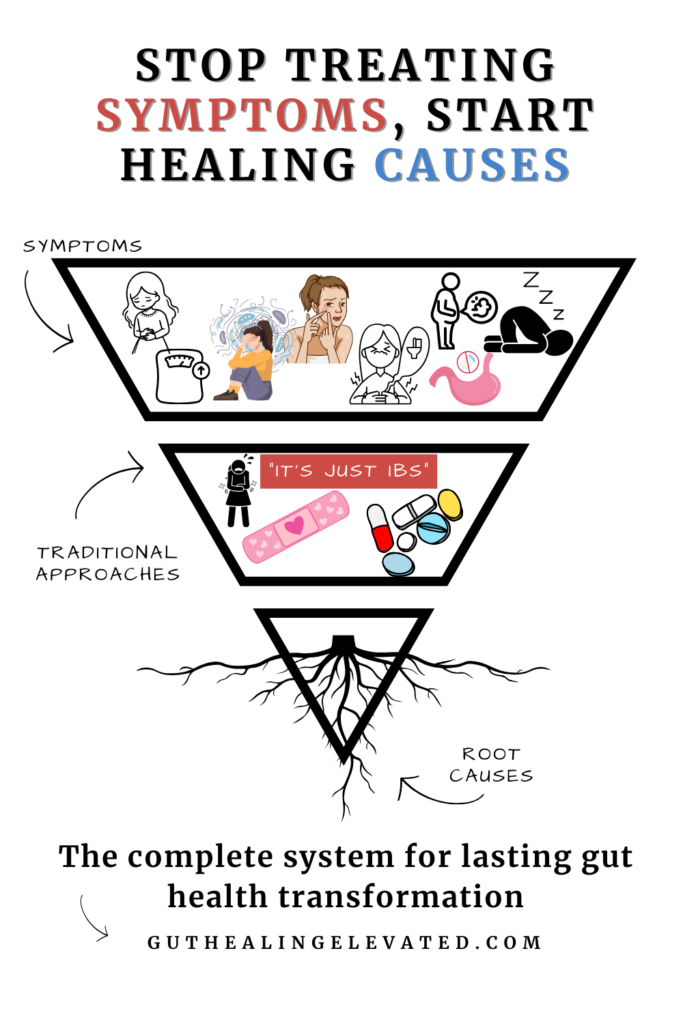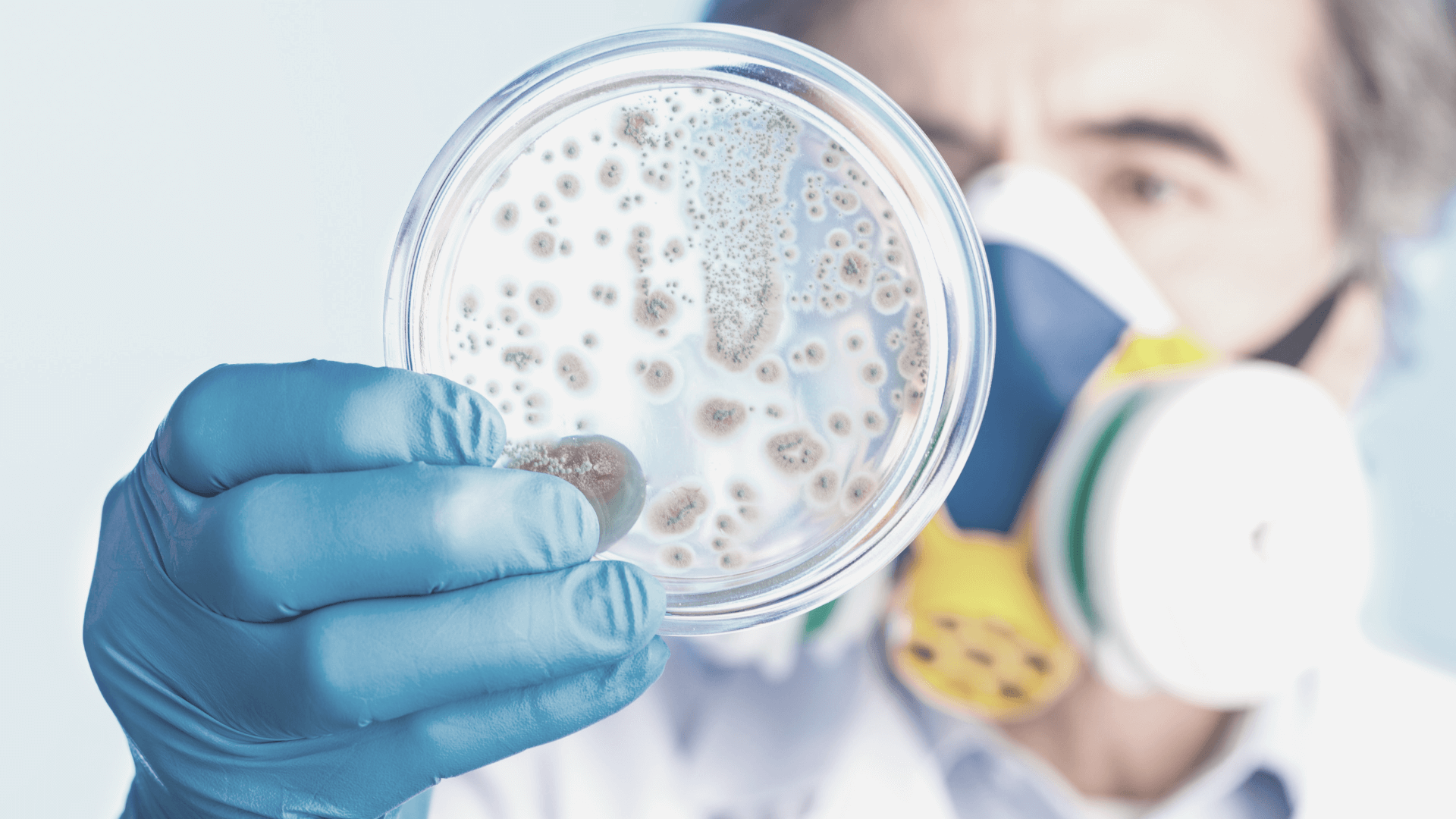What is the difference between a polysaccharide vs monosaccharides, since we’ve been talking about the various saccharides for awhile now?
If you need to quickly catch up, go ahead:
Today is the mammoth that are polysaccharides.
Polysaccharide vs Monosaccharides
Click HERE to save this post for later.

What is a Polysaccharide?
Polysaccharides are a group of complex carbohydrates made of many chains of simple sugars.
The most basic unit of carbohydrates are simple sugars, also known as monosaccharides (the simplest form of sugar).
You may recognize a few of these of these common monosaccharides such as glucose (most basic sugar), fructose (fruit sugar), and sucrose (table sugar).
These monosaccharides bind together to form disaccharides and then further bind into polysaccharides.
These large chains of polysaccharides are linked by glycosidic bonds, which attaches two separate carbon groups.
Their structure looks like this:

Notice how they are composed of carbon rings with many different hydroxyl groups and side chains.
This gives each polysaccharide their unique characteristics.
Their chemical structure is directly linked to their different properties.
For example, one that is meant to release glucose into the blood stream will be arranged so it can easily take off monosaccharides without damaging its backbone. The very sugars in our bodies are built for specific functions. How cool is that?
Polysaccharides form their glycosidic linkages by going through a process known as a condensation reaction.
One carbon chain loses its carboxyl (COH) group and the other loses a singular hydrogen atom from its hydroxyl group (OH).
They bind together to form a byproduct of water, hence the dehydration in the name. To break these bonds we can simply do the reverse by adding in a water molecule. This will restore the carboxyl group and the lost hydrogen to break the chains into their separate pieces.
Polysaccharides vs. monosaccharides
The main difference between polysaccharides and monosaccharides is simply the number of sugar molecules present in a chain.
Polysaccharides are large complex structures, while monosaccharides are composed of a singular sugar unit.
Monosaccharides are the building blocks of disaccharides and are absorbed easily in the small intestine. They contain single bonds of glycosidic links.
Polysaccharides, on the other hand, are much harder for our bodies to break down.
The small intestine has to break them down into smaller molecules before even attempting to try to absorb them.
This is why a good amount of our polysaccharides are converted to small sugar units before being absorbed into the bloodstream.
Both of these types of sugar are broken down by the same type of special enzyme, known as amylase.
However, the digestion of polysaccharides usually starts in the mouth while monosaccharides are completely broken down in the small intestine.
Polysaccharides in the body
Polysaccharides have crucial functions in the body like energy storage and structural support.

They are stored in such a way that they can hold many monosaccharides in a small space.
They do not dissolve in the cytosol of the cell, or the inner liquid, due to their chemical composition, which allows them to hold more sugar.
The two most common storage molecules are starch and glycogen, both which are polysaccharides.
Glycogen is the human form of stored glucose.
It can be released for energy or converted to fat.
Plants store glucose in the form of starch, where they can also utilize it for energy. T
his is such an important role as carbs are a major source of energy for all living things.
One of the most important functions of polysaccharides comes from two in particular, cellulose and chitin. Both of these polysaccharides help make up the cellular lining of cells.
Cellulose is found in plant cells while chitin is in the cells of fungi and insects. Without this external cellular lining, life would not be able to be supported in any of these organisms, most of which are large components of what we actually eat.
These structural polysaccharides help to support the entire content of the cells!
Fiber
One of the most important polysaccharides in the Gutsy community is fiber.
Polysaccharides like fiber can certainly help move things along, but can also cause a host of unpleasant symptoms.
Here are some benefits of dietary fiber:
- help regulate weight
- help regulate bowel movements
- blood sugar control
- lowers risk of cancer
- prevent hypertension
There are two types of fiber, one which helps to firm up our stool and slow down transit time and one that does the opposite.
The first is soluble fiber which gels the stool and helps it pass more slowly through the GI tract. It can help to lower blood cholesterol and firm up stool.
This is found in food such as oats, peas, beans, and apples.
The second type is insoluble fiber, which helps move things along the GI tract.
This helps prevent constipation, a symptom a lot of Gutsy girls struggle with. Good sources of insoluble fiber include nuts, potatoes, cauliflower, and wheat bran.
Since fiber is not able to be digested by humans, it can ferment in the large intestine and cause uncomfortable symptoms of gas and bloating.
So be careful of overdoing it!
Polysaccharides According to Elaine Gottschall
The polysaccharides are so complex that no information I can pull together will be as good for you as the information from Elaine Gottschall when she discusses them,
Polysaccharides are even bigger molecules. These consist of many sugar molecules. These molecules are even more difficult for the digestive system to handle. First, the pancreas releases a fluid, which contains for an enzyme that can split the polysaccharides (starches) into disaccharides (maltose). Next, the enzymes (maltase), which are produced in the duodenum, must break down the disaccharides (maltose) into monosaccharides, before the body can utilize this kind of carbohydrates.
She continues on to say,
Starches mainly contain polysaccharides. In a healthy person all these processes work perfectly. However, in a small group of people, the duodenum can’t produce enough enzymes to digest all the carbohydrates (di- and polysaccharides). This is what happens next: Large amounts of undigested carbohydrates remain in the intestines. This would normally be no problem, because whatever the body doesn’t utilize will end up in the toilet. However, the intestines also have natural inhabitants: Bacteria. The bacteria have been waiting for a long time for such a feast ! Lots and lots of disaccharides, their favorite meal!
And she wraps up with,
To thank you for the meal, they start to produce large amounts of gas (they fart) and they start to produce acids. As a result, the gas pressure in the intestines gets higher and higher. The body wants to relieve itself of the overpressure, and the host (you) starts to burp and fart. Also, the gas is giving the stomach some false signals. The stomach replies by producing more digestive acids. The result for the host: heartburn and throwing up and nausea. (Source)
Examples of Foods Which Contain Polysaccharides
Polysaccharides are found in so much of the food we eat on a regular basis.
Just think about it, polysaccharides make up a large number of energy storage in most living things!
Here are some examples of the major groups of polysaccharides:
- starch- cereal grains (not meaning actual cereal) such as rice, flour, wheat, rye and their byproducts (pasta, bread, flour), legumes, potatoes
- cellulose- grains, leafy veggies, legumes, apple and pear skins
- glycogen- shellfish and liver
p.s. The controversial carrageenan is also a polysaccharide.
If you liked this post, you might also enjoy:
Xox,
SKH
🤰 bloating be gone! weight loss through optimal gut health for women
💃ʜᴇᴀʟ ʏᴏᴜʀ ɢᴜᴛ. ʜᴇᴀʟ ʏᴏᴜʀ ʟɪfe.
🫶🏻 founder gutbyome.com








One Comment
Comments are closed.